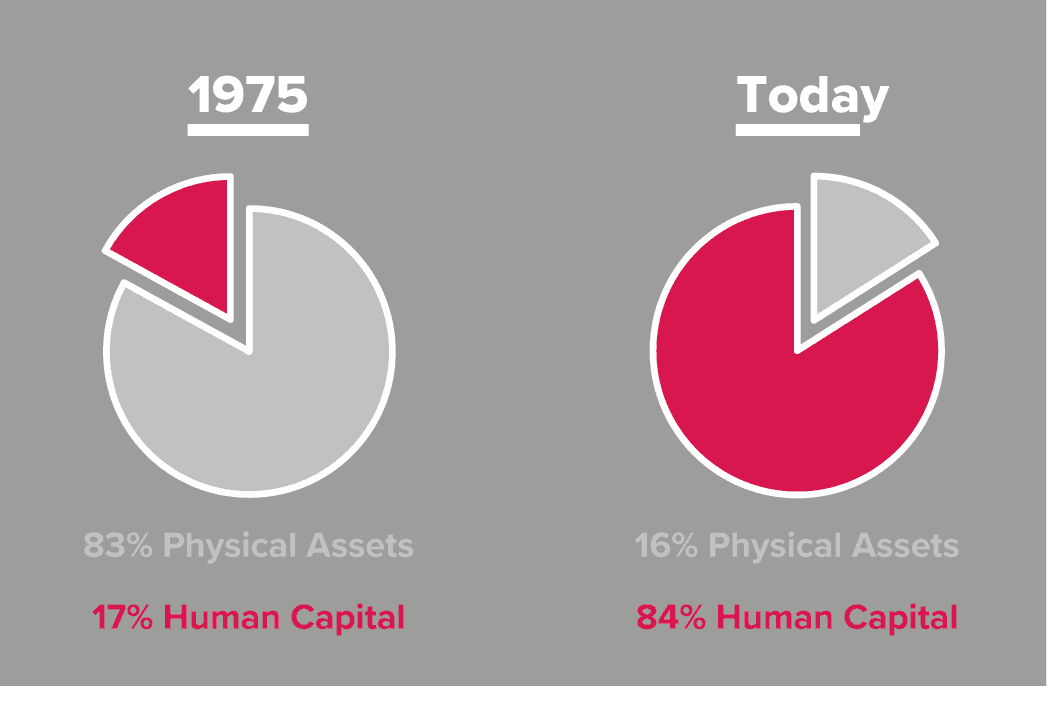2023: what happened and what’s next for HR and business leaders
At the start of 2023, I wrote about a fork in the road that all leaders were facing. As employee engagement rates were stuck at low levels, skills gaps were widening, and market turbulence and recession fears were in full force, I encouraged HR executives not to view the months that followed as a time

At the start of 2023, I wrote about a fork in the road that all leaders were facing. As employee engagement rates were stuck at low levels, skills gaps were widening, and market turbulence and recession fears were in full force, I encouraged HR executives not to view the months that followed as a time to catch their collective breaths, but instead to consider three paths forward in 2023: the nostalgia path (for those hoping for a return to the pre-Covid days), the “take a breath” path (for those hoping we could just take a pause and get a break in 2023), and the future forward path.
Instead of thinking of 2023 as a year of nostalgia, rest, and recovery, I encouraged us all to zoom out to zoom in, to envision the innovative moves that break from the status quo and build the next future. While it may have been tempting to treat the first post-pandemic year as a moment to catch up, it’s now clear that there were new challenges on the horizon that would require innovative strategies and profound transformations. Of course, in the past year, we had to manage all three paths forward and orchestrate these multiple perspectives in our companies. But the question I keep coming back to is whether we have focused enough on proactively creating the future.
Now, with the end of the year approaching, I think it’s safe to say that we’re all coming face-to-face with the obstacles I foreshadowed. The recession that many of us feared would dominate 2023 was abated (at least for now), but economic uncertainty remains. The explosive proliferation of generative AI (which celebrated its first birthday on November 30!) sends a clear signal that the nature of our jobs—and the skills required to do them—are in for a shakeup. While unemployment rates remain low and job openings are still at historically high levels, shifts in the talent landscape—and a shortage of skills, not workers—won’t be slowing down any time soon.
With so much unfolding over the last 12 months, many leaders are asking themselves an important question: “How should I look back at 2023? What happened in 2023? What did we make happen? And what does this mean for the year that lies ahead?”I think putting the past year in context may be helpful in creating strategies for what will come next, so I’m offering my take on 2023 and how it’s likely to shape the future of business and talent strategies.
Four takeaways for HR and business leaders reflecting on 2023
#1. Putting Economic uncertainty and cost-cutting conversations in context
At the start of 2023, according to a report from the World Economic Forum, two-thirds of chief economists believed a global recession was likely in 2023; of which 18% consider it extremely likely – more than twice as many as in the previous survey conducted in September 2022.As a result of these dire forecasts, most companies moved into cost-cutting mode, with many businesses initiating hiring freezes and rounds of layoffs in an effort to do more with less. Interestingly, these gloomy predictions never fully came to fruition.
Instead, thanks to a strong job market, the economy has proven more resilient than most experts expected. While over 200,000 American employees were laid off from the tech sector throughout the year, the impressive number of jobs added monthly throughout most of 2023 meant the majority of people were able to find new roles relatively quickly. As a result, unemployment remained at historically low rates that have stayed under 4% throughout the year (continuing a streak over 20 months).
There’s an ongoing debate about whether or not a recession is in the cards for 2024. However, from a talent and skills perspective, leaders might view 2023’s dire predictions as a learning experience. Amidst pressure to cut costs, executives cannot lose sight of the importance of continuing to create value while managing costs across the business. Cost efficiency and productivity are essential goals, but they must be shaped by a view of future direction. Ultimately, leaders must be thinking ahead to 2030 by prioritizing key themes including skill-building (reskilling and upskilling), busting silos, redesigning work to integrate employees, ecosystem talent AND technology, creating flexible workplace and workforce arrangements, and reallocating talent to meet emerging demand for new products and services.
#2. Gearing up for the age of Gen AI: a game-changer that’s just getting started
Explosive advances in AI that would change the way we work seemed like part of a distant future, at least until December of 2022; but today they’re an imminent reality. 2023 will go down in history as a turning point year for AI innovations, with the widespread introduction of Gen AI through OpenAI’s ChatGPT leading the way. 79% of employees say they’ve had at least some exposure to generative AI and 22% report they are already using it regularly in their own work.
As these AI-powered tools become mainstream, conversations about shifting skill needs are getting louder. Now that AI is taking over some of employees’ most tedious tasks, it frees up time in workers’ days for higher-level, strategic, and more human work that requires new skill sets. Employees will need to sharpen their soft and hard skills to be prepared for new levels of human-machine collaborations and new types of work.
In the coming years, experts predict that new automation technologies will eliminate 14% of the world’s jobs and radically transform another 32%. That means that instead of viewing 2023 as a one-off year for AI innovation, perhaps we should think of it as the beginning of an AI and human-powered era that will only continue to accelerate. It’s up to leaders to ensure their workforces have the skills needed to move into new ways of working and the new skills required as AI innovations begin to change the nature of the jobs we perform.
To prepare for the talent landscape shifts that AI advancements are setting into motion, Boston Consulting Group’s research notes that leading companies are investing up to 1.5% of their organizations’ total budgets towards reskilling and upskilling initiatives. The same research reveals that failing to meet the demand for new skills could cost as much as $15 trillion in lost GDP by 2030. 2024 will likely involve significant investments in skills, mobility, and work redesign strategies.
#3. Moving beyond the year of “wait and see”
Over this past year, I’ve had the chance to speak with executives at global enterprises across industries and geographies. Across many sectors, I’ve encountered a sense of hesitancy and caution. Many leaders recognize that our working world is profoundly changing. They understand that knowledge gaps are widening, skill needs are shifting, and the competition for talent with in-demand expertise is heating up.
Yet, despite these intensifying pressures, many executives aren’t taking immediate action. Instead, they’re watching what their peers are doing and searching for a well-worn path forward to help guide them through this critical crossroads. 2023, for many HR and talent leaders, was a year of tinkering at the edges and small pilots, but not necessarily bold experiments and investments. It’s tempting to stick with what’s familiar, to focus on optimizing current programs and systems, and to watch what other organizations are doing to learn from their successes and avoid their mistakes. But, this “wait and see” approach might prove costly given the scale of change and opportunity ahead. Perhaps in 2024, we need to move beyond pilots to experimentation at scale across the enterprise. Imagine if, for example when it comes to AI, work and the workforce, our companies looked more like humans and AI laboratories and less like AI factories.
It’s safe to say that in 2024, we won’t have a moment to spare. The pace of digital innovation is accelerating and market demands are shifting rapidly—meaning it’s up to businesses to implement talent strategies that will enable them to keep pace with these forces of change. The organizations that are best prepared to overcome tomorrow’s challenges and achieve long-term success are the businesses that are launching new initiatives and technologies, leveraging data and AI, which address the need to move faster, flow people to skills and changing work requirements, and create flexible (think hybrid and remote) and multi-directional opportunities and careers (think portfolio lives) within and across their companies.
#4. Taking a page from the handful of leading businesses who turned 2023 into a transformational journey
While 2023 was a year of caution and hesitation for many businesses, there are trailblazing companies that turned the past 12 months into a year of action and new directions. These organizations worked backward from the future by envisioning what they aim to achieve in 2025 and 2030 and determining plans of action to take concrete steps towards these goals.
Here at Gloat, we collaborated with The Josh Bersin Company to study these forward-looking businesses, which we now call Dynamic Organizations. These companies demonstrate a different leadership and cultural mindset and are implementing next-generation technologies to operate in new ways. They’ve embraced skill and talent-centric work and moved away from traditional job-based models; moving from a focus on jobs and roles to a focus on skills and work. By initiating these fundamental transformations, Dynamic Organizations enjoy exponentially better outcomes for their people and their businesses; they’re more likely to exceed financial targets, innovate better, delight their customers, and create world-beating people strategies and impacts.
Novartis, Mastercard, HSBC, MetLife, Schneider Electric, and Seagate are examples of what it means to be a Dynamic Organization. These businesses are harnessing talent marketplaces and skills analytics to dynamically reallocate talent to emerging priorities and empowering employees to participate in cross-functional projects to expand their skill sets and explore and access new career opportunities while maximizing productivity. I’m hopeful that in 2024, many more companies will join the ranks of these leading organizations by embracing the strategies and technologies that enable businesses to shift gears, to anticipate, and to prepare to take advantage of ever-evolving challenges putting skills and work at the center.
We began the year thinking about the three roads forward. As 2023 comes to a close, the road ahead in 2024 and beyond is becoming clearer. 2024 is a year where HR and talent leaders, and their business and technology colleagues, need to be embarking on a new journey. We call this the “Journey to the Dynamic Organization.” What’s your vision of the future? What stories are unfolding?
Whether last year was a year of action or a time to wait and see, we all have the opportunity and responsibility to turn the months that follow into a journey of profound change and bold moves. I believe that’s what it’s going to take to achieve success in 2025, 2030, and beyond. Or, in a phrase, to change the game you need to make game-changing moves. What’s your game plan? What’s your move in 2024?




